Sandra Sanz is an upcoming scientific illustrator from Valencia (Spain), primarily known for her work with the Eublepharidae family. You can check her work in her Facebook page.
How did you get interested in herpetology and scientific illustration?
Whenever you ask animal lovers or artists when their passion started, most of the time the answer is “it’s been like this as long as I can remember”, and I’m no different. I’ve been drawing ever since I could hold a pencil, and I remember chasing snakes, lizards and frogs from our local fauna as a little kid. I would also choose an illustrated natural history encyclopedia or a nature documentary over cartoons or storybooks anytime. Animals fascinated me and I would draw them all the time.
One of the biggest obstacles in my life has been having too many interests (art, biology, computing, psychology…), because it has been an ongoing problem for me to choose a path and stay focused on it. Since one has only limited time in their lives to do what they love, scientific illustration felt like a logical way to combine two of my biggest passions into one.
How did you start making scientific illustration?
I never fully stopped drawing but I started considering it a real career choice about four years ago. While I enjoyed working with computers when I was in IT, I felt sad that my knack for drawing was slowly decaying due to not putting enough time into it. I decided that it couldn’t stay a mere hobby and enrolled in an illustration degree program.
When I graduated I immediately started working on building a scientific illustration portfolio. Conveniently at the same time, the first International Contest of Herpetological Illustration happened. I decided to present a diagram of all the species of the Eublepharidae genus, because it’s a group that I’m familiar with and because despite the leopard gecko being a popular species in captivity, most people don’t know much about their natural history.
After that I posted the picture to the Facebook groups that helped me to gather the necessary information and references for the artwork (namely Leopard Gecko Wild Types and Eublepharidae Enthusiasts). Initially I did it just to show people the results of their cooperation and thank them, as I didn’t plan on selling my work until I finished building my portfolio; but it started being shared like crazy and I got flooded with messages asking where to buy a print, making requests to depict more species in the same way, etc., so I opened a Society6 store where people can buy prints in the meantime.
What is your process?
Research
The first and most important stage for any scientific illustration project is gathering information, both graphic reference and documentation. Usually my first step is going to the Reptile Database and checking the taxonomic structure of the genus I’m interested in. After that, I go to reptile forums and Facebook groups and check the latest discussions to see if there have been any recent changes in the species taxonomy that the Reptile Database has not reflected yet.
When I have a definitive list of all the species of the genus, I create a folder in my computer for each one and proceed to fill it with all the data, pictures and video I can gather about it. My sources include websites, internet forums and Facebook groups, description papers, publications, and real life observation. If after this I still have any doubts left about any of the species, I usually send a private message to a person who I’ve seen from my research that is knowledgeable about the species in question, and they are usually happy to help.
Composition
When I have all the material I need, it’s time to decide the structure the picture will have. To facilitate didactic purposes I keep together the specimens that have something in common, such as the Eublepharis macularius subspecies or the Goniurosaurus pertaining to the same group. Also, I need to mix bigger and smaller species so it doesn’t look unbalanced, and try to push the best known species to the center of the picture. I have to carefully choose the posture and position of each gecko so they fit but don’t look unnatural or off balance.
Drawing and painting
Once I’m happy with the composition, it’s time for the main event. I draw each species in a bigger format (usually in half an A3 sheet) than the final size to include as much detail as possible. I paint mostly with watercolors, and then add some details with color pencils.
Photo and video references (in the absence of direct observation) are essential at this stage. Video helps tremendously to capture the mannerisms of each species, while photography provides detail, although one must be careful to not translate the inaccuracies in color and perspective from the photos to the drawing. I’m also very wary of not totally copying any photos so I don’t infringe someone’s copyright; the posture and pattern of each gecko is usually an amalgam of several different references.
Digital retouch
In this stage I scan the pictures and use Photoshop to correct color balance, proportions and any other imperfections. Finally, I compose the picture and add the text.
Distribution
Distribution was a hindrance for me because most of my potential customers were overseas, so printing and shipping the items myself was out of the question. In the end I created an account at Society6 were they print and ship items on demand and offer free worldwide shipping from time to time. For people who wanted to buy in bulk to resell, where on-demand pricing was too expensive, I contacted print stores that were located at the reseller’s country to print and ship the items directly to them. If you are interested in this option, contact me at [email protected] and I’ll check if this is possible at your location.
Are you working on anything else besides the posters?
My main project right now is to make posters of all Genera of the Eublepharidae family, and after that I want to make posters of other gecko families that I like.
While I enjoy the realistic and scientific approach, I also like to get a little silly from time to time, and I’m working at getting better at digital painting to make more simple, friendly illustrations that work well as apparel, cases, stickers, etc.
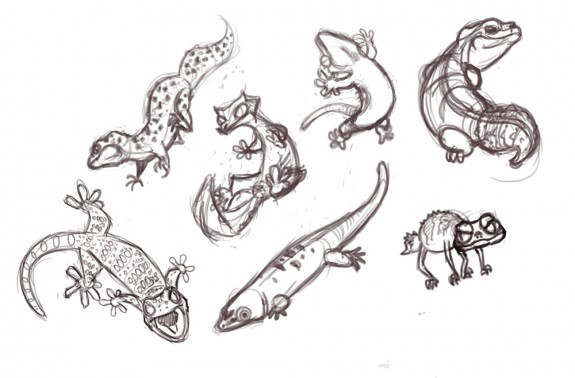
Geckos in a more cartoony style
Of course, I don’t want to stop making merchandise for reptile fans. I would love to work hand in hand with experts and make real contributions to science. If you’re interested in commissioning me, you can reach me at [email protected].


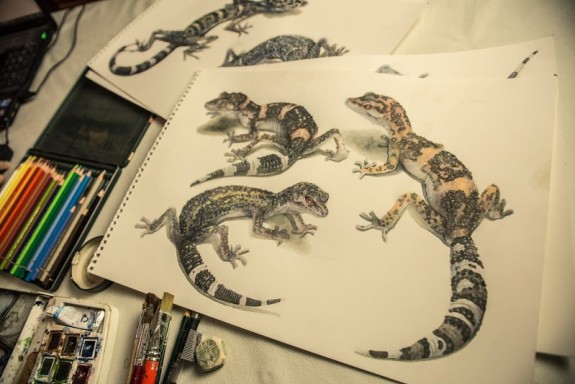
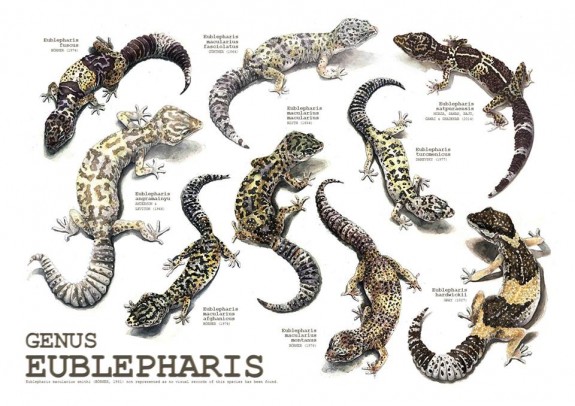
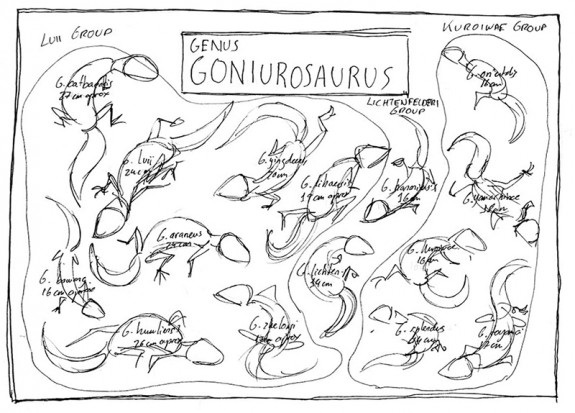
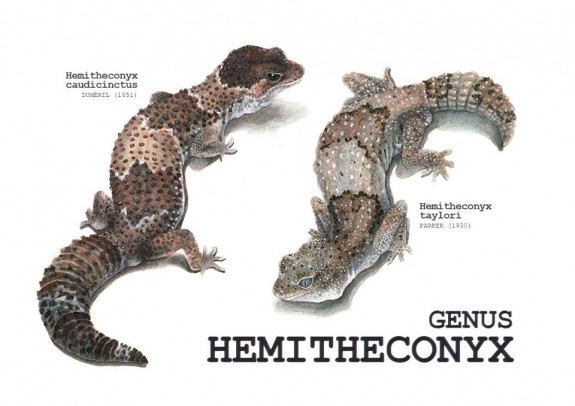
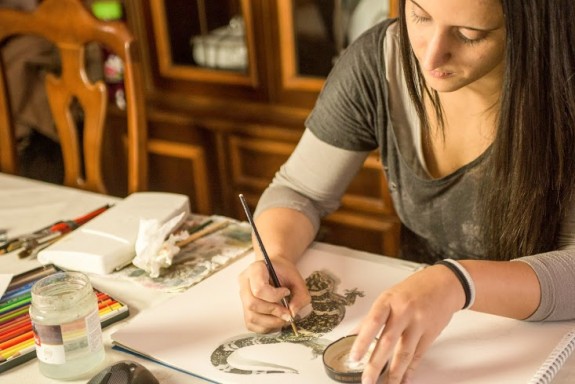
Awsome illustrations. This girl watercolors are so pretty!
I love these illustrations. The texture of the gecko skin looks so velvety. Thanks for sharing your process behind your beautiful creations.